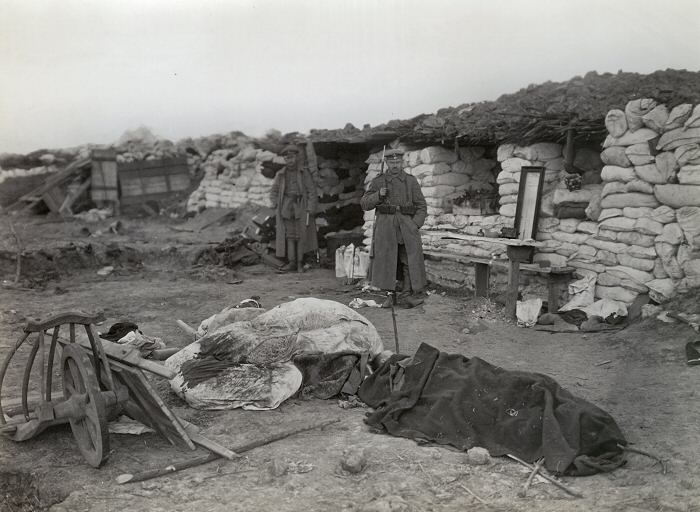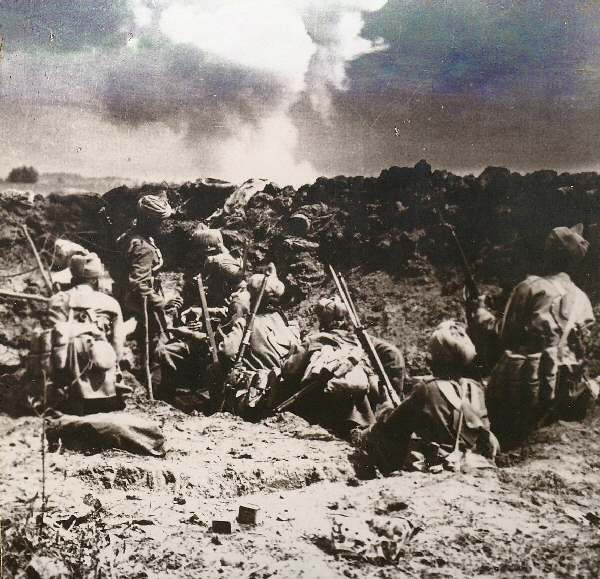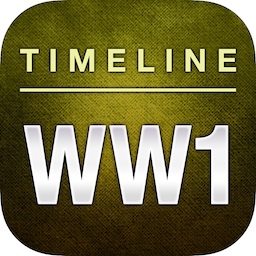Today is the 100th anniversary of a forgotten but fascinating World War One battle. Neuve Chapelle. There are many reasons why i think we should remember this clash. Obviously it is important to mark any occasion on which tens of thousands of men went over the top and several thousand became casualties. But it should also be remembered for the first time the British accepted the logic of static, positional trench warfare and attempted a systematic offensive to break out of the stalemate and restore mobility to the battlefield.
It is possible to see all sorts of innovations at Neuve Chapelle which don’t work that well on this early occasion but which will eventually bear fruit. But only after long brutal, bloody years of war.

The British plan was to push the Germans back, threaten vital rail links and perhaps force the Germans to pull back in other sectors by making their line in Artois untenable. The first thing the British realised they needed was intelligence. Any hope that you chucked a few rounds across the battlefield and followed it up with a determined push had been wiped out by 1914. So the British went to great trouble despite the bad winter weather, or photographing every yard of German defences from the air. Maps were then made so that for the first time British attacking troops would know exactly what their objectives were. The artillery was given the job of annihilating the German defences. As the war progressed people realised that artillery took ground, the infantry then secured it. We see that for the first time at Neuve Chapelle.
A 35 minute barrage obliterated German barbed wire and trenches. At exactly 0805 the barrage lifted and the infantry swarmed forward. The guns now supported them by attempting to put down a curtain of fire beyond them to stop counterattacking Germans moving forward to stop the British attack. The infantry that attacked were from Britain’s Indian empire. Their first major attack on the Western Front.

The fate of the attack is fascinating and set the pattern for the fighting over the next few years. On the right the Indians veered slightly too far south and crashed straight into a section of German defenders who had not been bombarded. The Indians were caught in a blizzard of machine guns fire and suffered terribly. On the left however the attack went very smoothly. The Indians overran the first and support trenches in 15 minutes. The commanders put the cavalry on standby, hoping for a breakout into open country beyond the trenches. But the British forces were held up by pockets of German defenders.
.
British generals had almost no communication with their own troops once they had left the British frontline. The British artillery had no way of communicating with the infantry. Telephone cables were hastily laid but were vulnerable to being cut by enemy fire or general wear and tear. Once the strictly coordinated plan for the barrage and infantry attack had run its course, the battle reverted to a chaotic struggle as groups of Indians were locked in combat with isolated German positions or batches of reinforcements who filtered in during the day.
.
Not for the last time, the british found they were able to ‘break in’ to the German defences, but not ‘break out’. The enemy could rush reinforcements to a threatened sector quicker than fresh british troops could scramble across the shattered battlefield. German guns, set back from the front line, were zeroed in on No Mans Land and immediately saturated the open space over which the British had to advance with shrapnel and high explosives.
The aerial reconnaissance was good but inevitably the odd machine gun post or strong point was missed and just one machine gun could hold up an advance by critical minutes and hours. Neuve Chapelle was called to a halt after a couple of days, but the only success to speak of had been achieved in that first few minutes. It was a watershed moment on the Western Front. The allies were given a clear picture of the problems that they would have to confront if they were to drive the invading Germans back. First and foremost they needed a lot more ammunition. In 35 minutes the British guns had fired more shells than the British Army had fired during the entire Boer War.
Before they could win the battle on the Western Front, they needed to fight and win a battle for war production on the Home Front.
If you are fascinated by military history, 2015 will be a massive year – check out the app below to see why.
Timeline World War 1 is a multimedia history of the First World War, presented by historian and TV presenter Dan Snow, in association with British Pathe. Content covering the events of 1914 is available for free within the app, with further years available to view via in-app purchase. Download here iTunes
And you can also follow Dan on Facebook and Twitter,instagram.com and of course you can buy Dans books on Amazon
Bunker picture credit: grensland-docs.nl
https://youtu.be/Hl2pevdTAN8

